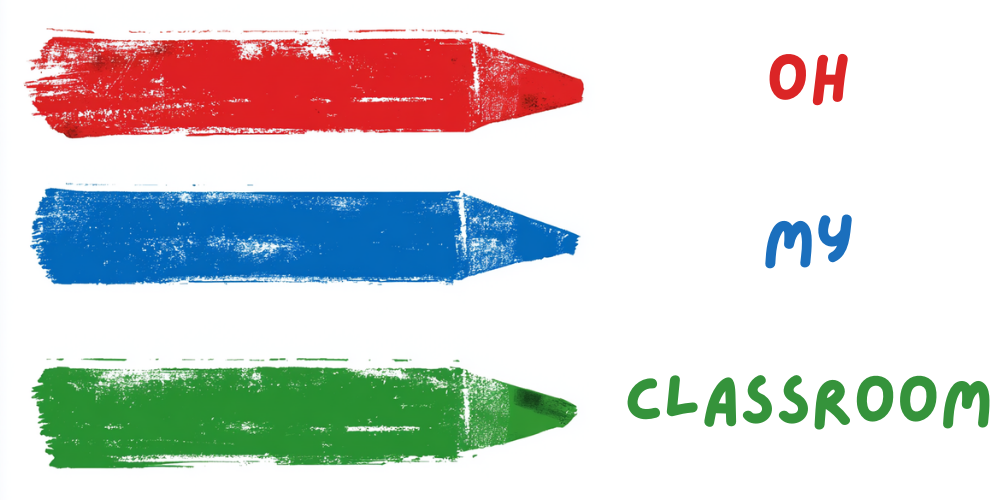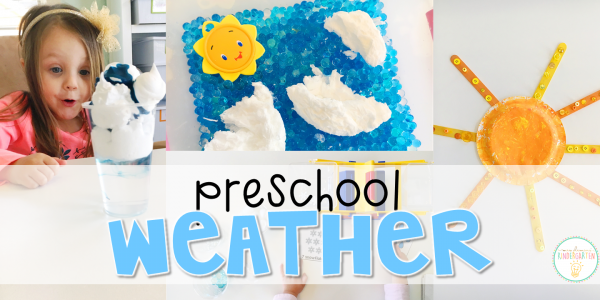Engaging young children in learning about the weather can be both educational and exciting. Weather is a fascinating and ever-changing aspect of our environment that impacts our daily lives.
Introducing preschoolers to weather-related activities not only teaches them about the natural world around them but also encourages their curiosity and observation skills.
From exploring the sun and rain to understanding the different seasons, these weather-themed activities are designed to be hands-on, interactive, and enjoyable for preschoolers.
This article presents a variety of creative and educational weather preschool activities that can spark children’s interest in meteorology while fostering their cognitive and motor skills development.
Cloud in a Jar Experiment:
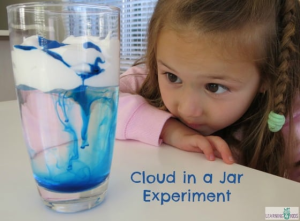
Explore the wonders of clouds with a simple and captivating experiment. Fill a clear jar with water until it’s about a third full. Invite the children to hypothesize what happens when warm water, representing air, is added to the jar. Then, assist them in using a bar of soap to gently rub against the inside of the lid before placing it on the jar. Have the children shake the jar to create a cloud-like effect. As the warm air cools down, they’ll witness the formation of a cloud in the jar, illustrating the process of condensation.
Weather Wheel Craft:
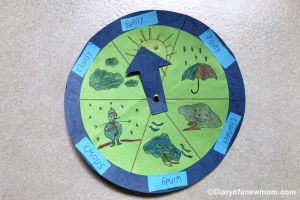
Engage preschoolers in a creative craft activity by making a weather wheel. Provide each child with a pre-cut circle of cardboard divided into segments representing different weather conditions, such as sunny, cloudy, rainy, and snowy. Have them decorate each segment accordingly and attach an arrow in the center. Discuss the different types of weather as they decorate and assemble their wheels. This activity not only enhances their fine motor skills but also helps them understand the concept of changing weather patterns.
Rainbow Science:
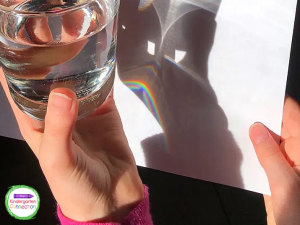
Teach kids about rainbows with an interactive and colorful experiment. On a sunny day, position a glass of water near a window and place a white piece of paper on the opposite side to catch the light. Show the children how to use a flashlight to shine light through the glass of water onto the paper. As the light passes through the water, a beautiful rainbow will appear on the paper, showcasing the dispersion of light and the formation of rainbows.
Related: 25 Fun Preschool Themes for August (Ideas)
Seasons Sensory Bins:

Create sensory bins that reflect the different seasons to help preschoolers understand seasonal changes. For example, for spring, fill a bin with faux flowers, grass, and plastic insects. Use cotton balls for snow in a winter-themed bin, and small leaves and pinecones for fall. Include items like sand, seashells, and mini umbrellas for a summer-themed bin. Encourage children to explore these sensory materials, fostering their tactile senses while discussing the weather patterns associated with each season.
Windsock Craft and Wind Experiment:

Combine creativity and science by making windsocks and conducting wind experiments. Assist children in decorating paper tubes with markers, stickers, and colorful streamers to create their windsocks. Then, head outside on a breezy day and hang the windsocks in an open area. Observe how the wind direction and speed affect the movement of the streamers. This hands-on activity provides preschoolers with a tangible way to understand wind and its effects.
Sun Prints with Nature Items:
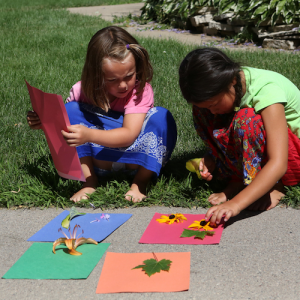
Take advantage of a sunny day to introduce preschoolers to the concept of the sun’s power. Gather a variety of flat, natural objects like leaves, flowers, and small branches. Place these items on sun-sensitive paper in a sunny spot outdoors. After a few hours, remove the objects to reveal the prints that have been formed due to the paper’s exposure to sunlight. This activity not only showcases the sun’s energy but also encourages children to explore patterns and shapes in nature.
Weather Dress-Up Relay:

Organize a relay race where children get to dress up in various weather-appropriate clothing. Prepare a selection of clothing items for different weather conditions, such as raincoats, umbrellas, sunglasses, snow boots, and sun hats. Divide the children into teams and set up a relay course. When it’s each child’s turn, they must run to a pile of clothes, put on an outfit that matches a given weather condition, and then run back to their team. This active game makes learning about different types of weather enjoyable and memorable.
Related: 25 Exciting Germs Activities for Preschool
Ice Excavation:

Teach preschoolers about freezing temperatures and ice by engaging them in an ice excavation activity. Freeze small toys or objects in water-filled containers overnight. The next day, provide the children with tools like spoons, pipettes, and spray bottles filled with warm water. Let them work on “excavating” the toys from the ice. This hands-on activity demonstrates how temperature can change water from liquid to solid and allows children to develop fine motor skills as they explore the ice.
Weather-themed Storytime and Art:
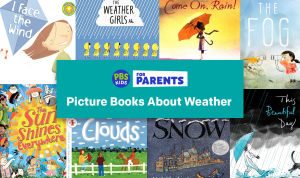
Combine literature and creativity by selecting weather-related children’s books to read aloud. After reading a story about rain, wind, or other weather phenomena, provide the children with art supplies to create their own weather-inspired artworks. For instance, after reading about rain, they could paint raindrops falling from the clouds. This activity promotes both literacy and artistic expression.
DIY Wind Chimes:

Engage preschoolers in a craft project that demonstrates the effects of wind. Provide them with a variety of materials such as beads, bells, seashells, and sturdy cardboard or paper plates. Assist the children in decorating and attaching these items to strings or ribbons. Once completed, hang the strings from a sturdy base like a wooden dowel or a recycled plastic lid. Hang the wind chimes outdoors and encourage the children to listen to the soothing sounds they create whenever the wind blows.
Cloud Watching:

On a clear day, take the children outside to observe and identify different types of clouds in the sky. Encourage them to lie on their backs and look up, discussing the shapes and patterns they see. Explain how different clouds can indicate different weather conditions. This activity promotes both outdoor exploration and observation skills.
Weather Bingo:

Create a weather-themed bingo game with various weather-related images or symbols. Provide each child with a bingo card and markers. As you discuss different weather conditions, have the children mark off the corresponding images on their cards. This game helps reinforce vocabulary related to the weather while also engaging children in a fun group activity.
Indoor Rainstorm Sensory Play:
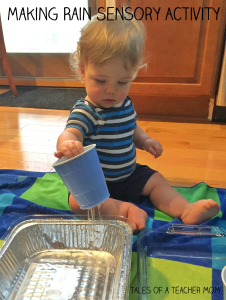
Set up an indoor rainstorm sensory bin by filling a container with rice, dry pasta, or small pebbles to represent the ground. Add toy houses, trees, and small plastic animals. Using a spray bottle filled with water, simulate a rainstorm by spraying the “landscape.” Discuss rain and its role in nourishing plants and animals while allowing children to enjoy tactile play.
Weather Chart and Graph:
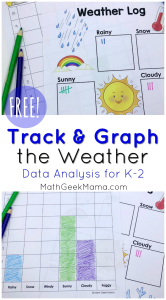
Create a simple weather chart with columns for different weather conditions (sunny, rainy, cloudy, etc.) and rows for each day of the week. Every day, ask the children to observe the weather outside and help them place a sticker or draw a symbol on the chart to represent that day’s weather. As the week progresses, discuss the patterns and changes they observe and help them create a bar graph to visualize the data.
Wind Art:

Harness the power of the wind to create unique art. Provide the children with a large sheet of paper and a variety of lightweight materials like tissue paper, feathers, and ribbons. Set up an outdoor space where they can arrange these materials on paper. Then, let them use handheld fans or their breath to create movement and patterns. This activity showcases the effects of wind while allowing for creative expression.
Rainstick Craft:

Introduce preschoolers to the soothing sound of rain with a rainstick craft. Provide each child with a cardboard tube (such as a paper towel roll), small nails, and aluminum foil. Assist them in placing the nails at various intervals along the tube, then covering the ends with the foil. Fill the tube with rice and seal the other end. When turned upside down, the rice will mimic the sound of falling rain.
Weather Dance Party:
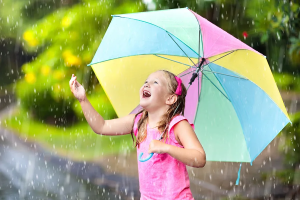
Create a dynamic and energetic weather dance party. Choose different types of music to match various weather conditions, such as a sunny dance, a rainy dance, a windy dance, and so on. Encourage the children to move and dance in ways that reflect the different weather patterns they’re experiencing through the music.
Weather Collage Art:

Provide children with a selection of old magazines, newspapers, and colored paper. Ask them to cut out images and shapes related to different weather conditions, such as suns, raindrops, clouds, and snowflakes. Then, help them arrange these cutouts on a larger piece of paper to create a weather-themed collage. This activity promotes fine motor skills and creativity.
Weather Charades:

Play a game of charades with a weather twist. Write down various weather-related actions or phenomena on pieces of paper, such as “jumping in puddles,” “shivering in the cold,” or “blowing in the wind.” Have one child draw a paper and act out the weather-related scenario while the others guess what it is. This activity encourages imaginative play and helps children associate actions with different weather conditions.
Outdoor Wind Play:

Take advantage of a windy day for outdoor wind play. Provide children with a variety of lightweight objects like feathers, leaves, tissue paper, and lightweight scarves. Let them experiment with how the wind affects the movement of these objects. You can also make simple windsocks using paper or fabric to demonstrate wind direction and speed.
